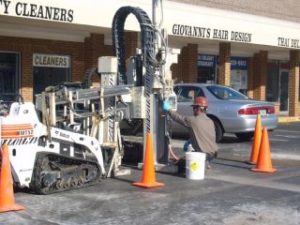
Sites contaminated by chlorinated solvents present a remediation challenge. Chlorinated solvents are among the most difficult groundwater contaminants to remediate, especially at sites with dense, non-aqueous-phase liquid (DNAPL) still present in the source zone. Restoring sites contaminated by chlorinated solvents to regulatory criteria (low parts-per-billion concentrations) within a generation (~20 years) is difficult. Site managers and property owners must recognize that complete restoration of many of these sites will require prolonged treatment and involve several technologies. Significant remedial progress requires a thorough understanding of the site, clear descriptions of achievable objectives, and use of more than one remedial technology. Making efficient progress requires an adaptive management strategy and may also require transitioning from one remedy to another as the optimum range of a clean-up technology is passed. Targeted monitoring should be used and progress toward objectives periodically reevaluated.
A DNAPL site management strategy should contain five key features:
Conceptual site model
A Conceptual Site Model (CSM) must be based on reliable characterization methods and an understanding of the subsurface conditions that control contaminant transport, reactivity, and distribution. The CSM is the framework for site specific knowledge that can guide site management/remediation decisions. The CSM is the initial tool in developing a site strategy it should integrate several factors:
- the site geologic and hydrogeologic setting
- the physical and chemical properties of the contaminants
- geochemical conditions
- physical, chemical, and biological attenuation mechanisms (e.g., sorption-desorption, oxidation, microbial reductive de-chlorination)
- the relevant transport processes within and between compartments
Remedial Objectives
Realistic Remedial Objectives and performance metrics are critical which are clear, concise, and measurable. Typical remediation Objectives:
- Tier 1: Address residual sources, including principal threat wastes, minimize the risk to receptors due to contaminated surface soils, and achieve at least a 90% reduction in contaminant discharge from the high-concentration source area to the dissolved-phase contaminant plume.
- Tier 2: Achieve the cleanup levels at interim performance monitoring points.
- Tier 3: Determine whether cleanup levels can be achieved in a reasonable time frame throughout the entire contaminant plume by discontinuing the groundwater extraction and treatment system operation and implementing MNA of remaining contamination.
Remediation Technologies
Remediation Technologies should be applied in sequence or in parallel designed to optimize performance and take advantage of potential synergistic effects. Typical Technology categories include:
- Physical Removal: Excavation, Multiphase Extraction, or Thermal conductivity/ Electrical Resistance Heating.
- Chemical/Biological: In-situ Oxidation/Reduction/Bioremediation or Monitored Natural Attenuation.
- Containment: Pump and Treat, Permeable Reactive Barriers, Low-permeability barrier walls or solidification/stabilization.
Monitoring Strategies
Monitoring Strategies should be based on interim and final cleanup objectives, the selected treatment technology and approach, and remedial performance goals. The monitoring approach must include a spatially and temporally sufficient and reliable data set of the remedy performance. Three types of monitoring are needed: compliance monitoring used throughout the remediation lifetime to document the nature and extent of impacts and to ensure that potential exposure pathways are controlled, process monitoring to assess whether the system is functioning as intended, and performance monitoring to assess effectiveness of the remedial approach in meeting project objectives. Groundwater monitoring programs collect data that intend to represent the concentration of contaminants, contaminant degradation products, water chemistry (pH, Eh, temperature), and other aqueous chemicals that may influence the behavior of chlorinated solvents dissolved in groundwater. Groundwater samplers are designed to obtain a representative water sample.
Reevaluating the Strategy
Reevaluating the Strategy repeatedly and even modifying the approach when objectives are not being met or when alternative methods offer similar or better outcomes at lower cost. In reevaluating the remedial strategy three questions should be answered:
- Are the functional objectives being met?
- Is progress toward the functional objectives acceptable?
- Can objectives be achieved with greater efficiency?
- How do you troubleshoot the remedy if objectives are not being achieved?
If project objectives are not being achieved at an acceptable rate or cost, the remedial strategy should be evaluated to determine whether one or more components of the strategy (i.e., CSM, functional objectives, or technology selection) should be revised.